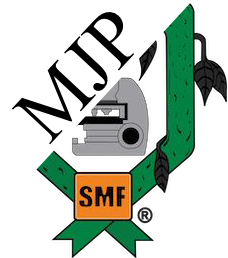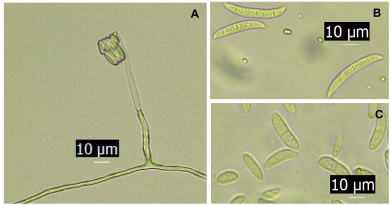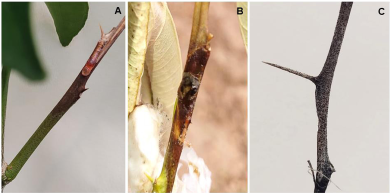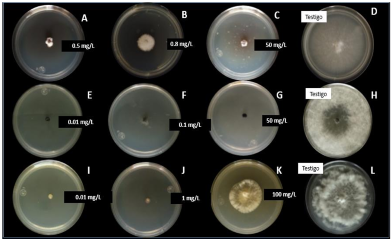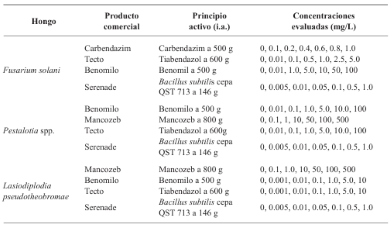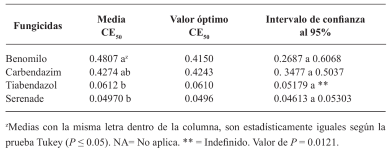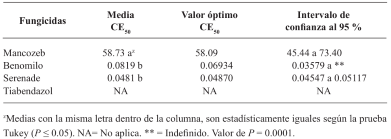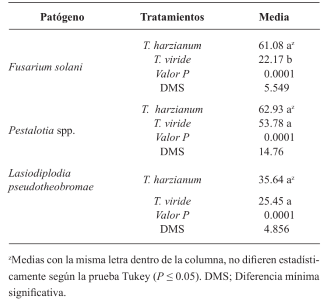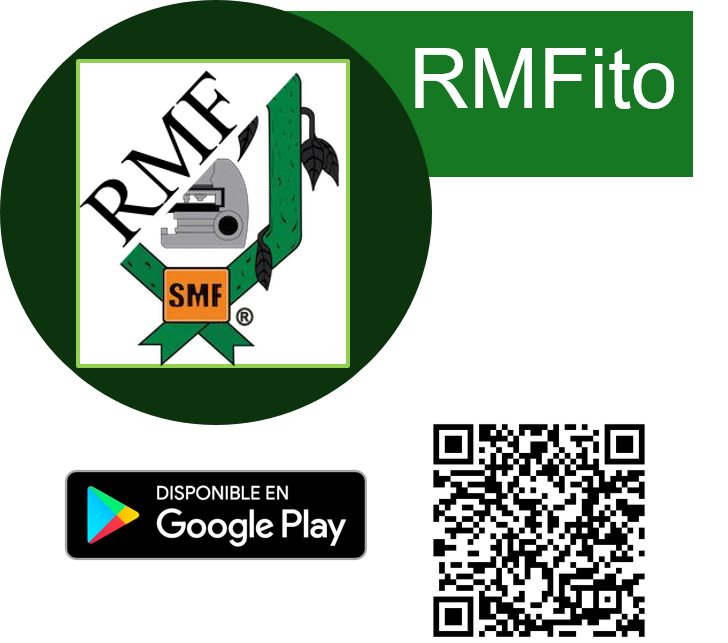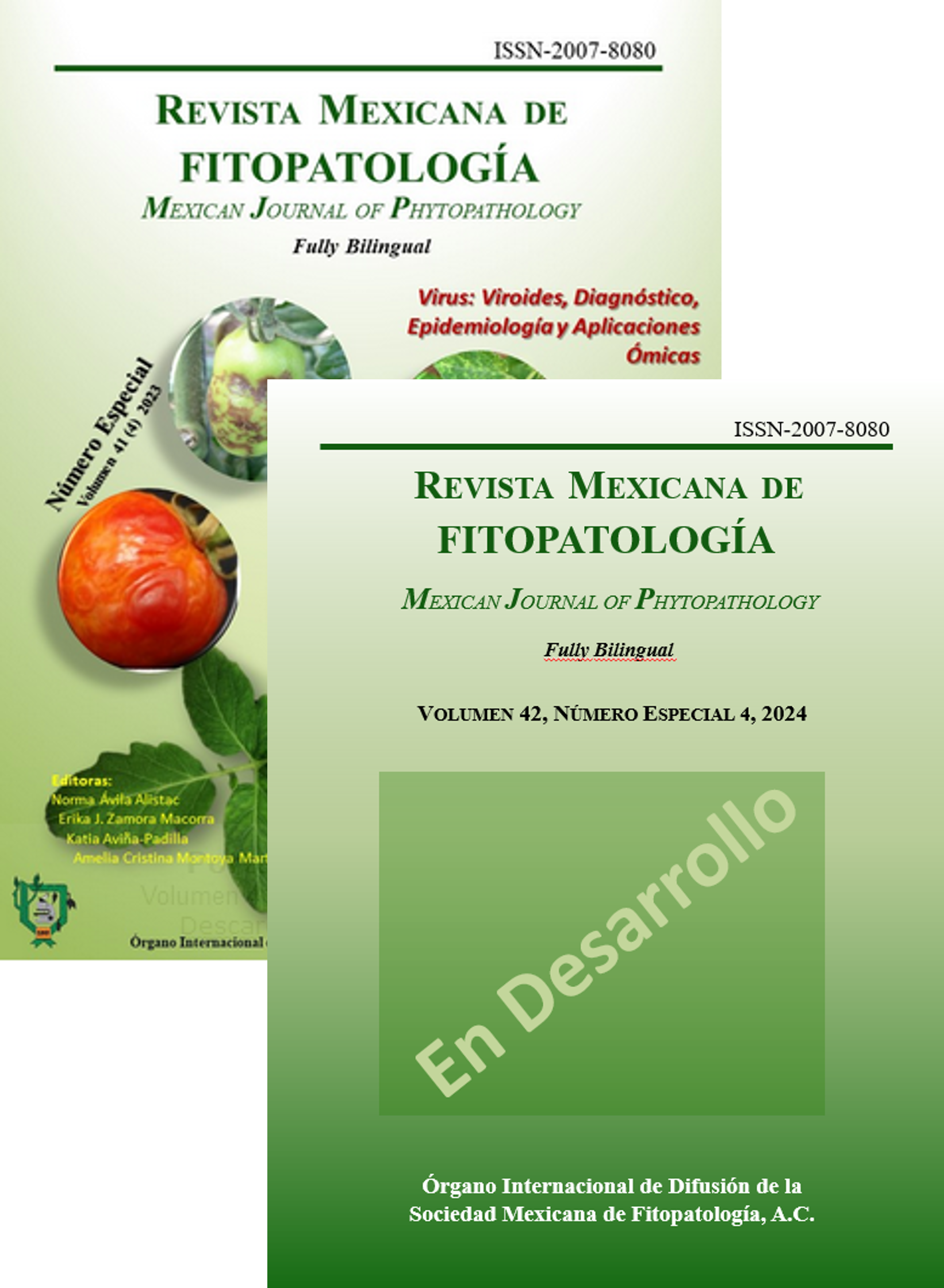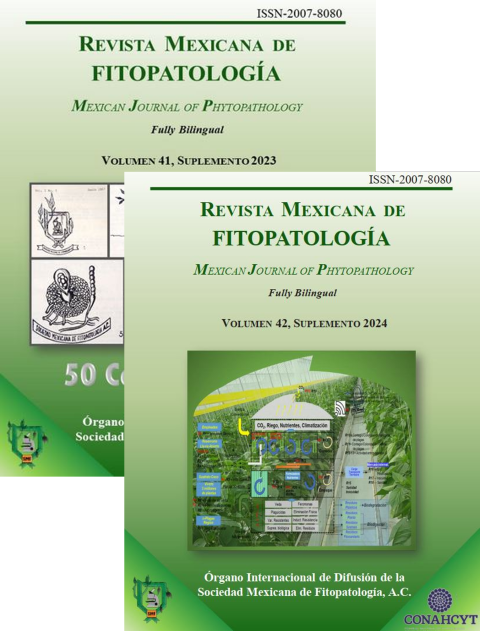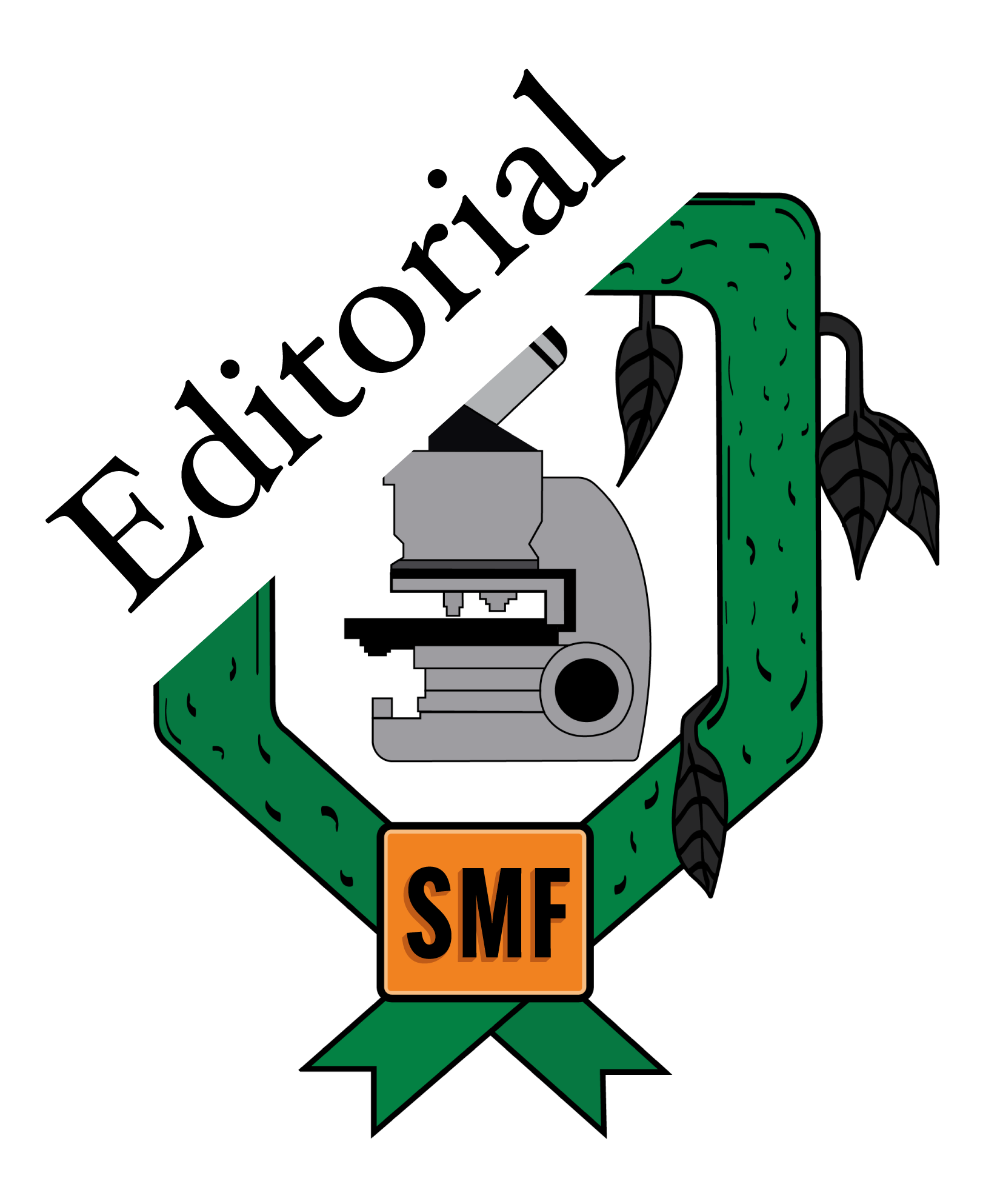In vitro biological and chemical control of fungi associated with gummosis in citrus fruits in Yucatan, Mexico
By
Célida Aurora Hernández Castillo*,
Patricia Rivas Valencia,
Leticia Robles Yerena,
Mariana Guadalupe Sánchez Alonso,
Emiliano Loeza Kuk
* Corresponding Author. Email: / Institution: Universidad Autónoma Chapingo
Accepted: 05/November/2024 – Published: 26/October/2024 – DOI: https://doi.org/10.18781/R.MEX.FIT.2024-03
Abstract Background/Objective. In all citrus-producing regions in the world, gummosis is a disease that has caused losses in citrus production. This disease is caused by several pathogens. The objectives were to identify the fungi associated with gummosis in citrus orchards of Plan Chac, Sacalum, Yucatan; and to evaluate chemical and biological alternatives for the control of fungi associated with gummosis.
Materials and Methods. From fragments of plant tissue and soil, the associated fungi were isolated. The isolates were identified morphologically in plant tissue as Lasiodiplodia pseudotheobromae and in soil as Fusarium solani and Pestalotia spp. The pathogenicity test determined that L. pseudotheobromae is an agent associated with this disease. The isolates were subjected to in vitro tests with chemical fungicides and antagonist agents.
Results. Thiabendazole showed effectiveness for F. solani with an effective concentration to inhibit 50 % of the population (EC50) of 0.0612 mg L-1, with Pestalotia spp. inhibited growth at all concentrations evaluated and for L. pseudotheobromae, it showed an EC50 of 0.0049 mg L-1. In the case of Bacillus subtilis strain QST 713, the growth of F. solani (EC50 0.0496 mg L-1), Pestalotia spp. (EC50 0.0487 mg L-1) and L. pseudotheobromae (EC50 0.0528 mg L-1) decreased. On the other hand, Trichoderma harzianum showed a greater inhibition against F. solani, Pestalotia spp. and L. pseudotheobromae of 61.08, 62.93 and 35.64 %, respectively.
Conclusion. In the management of gummosis in citrus fruits, the use of biological agents such as Trichoderma and B. subtilis can be efficiently included, offering alternatives with less impact on the environment
Keywords:
Bacillus, Lasiodiplodia, mycelial inhibition, Thiabendazole, Trichoderma
Figure 1. Front and back of isolates in PDA culture medium of fungi related to the gummosis of citrus fruits. A) Six-day old Lasiodiplodia pseudotheobromae culture, obtained from tissue from the cortex. B) Six-day old Fusarium solani culture. C) Six-day old Pestalotia spp. culture, both obtained from the soil.
Figure 2. Microscopic morphology of fruiting Lasiodiplodia pseudotheobromae bodies. A, B and C) Globose pycnidial conidiomata, D) mature septate conidia with longitudinal striations, E conidiogenous cells and paraphyses and F) immature aseptate conidia.
Figure 3. Microscopic morphology of Fusarium solani associated to the gummosis in citrus fruits. A) Phialides and conidia grouped into flower heads, B) Mature septated conidia, C) Mature microconidia.
Figure 4. Symptoms and signs caused by Lasiodiplodia pseudotheobromae on citrus fruits, A) stem necrosis, B) presence of pycnidia on stems, and C) production of exudate or gum.
Figure 5. In vitro effect of fungicides against fungi associated to the gummosis of citrus fruits in five days. Growth of Fusarium solani: A) Medium with Thiabendazole at 0.5 mg L-1. B) Medium with Carbendazim at 0.8 mg L-1. C) Medium with Benomyl at 50 mg L-1. D) Control. Growth of Lasiodiplodia pseudotheobromae: E) Medium with Thiabendazole at 0.01 mg L-1. F) Medium with Benomyl at 0.1 mg L-1. G) Medium with Mancozeb at 50 mg L-1. H) Control. Growth of Pestalotia spp.: I) Medium with Thiabendazole at 0.01 mg L-1. J) Medium with Benomyl al 1 mg L-1. K) Medium with Mancozeb at 100 mg L-1. L) Control.
Figure 6. Effect of Trichoderma spp. In the development of fungi associated to the gummosis of citrus fruits. A) Fusarium solani vs T. harzianum. B) F. solani vs T. viride. C) Pestalotia spp vs T. harzianum. D) Pestalotia vs T. viride. E) Lasiodiplodia pseudotheobromae vs T. harzianum. F) L. pseudotheobromae vs T. viride.
Table 1. Treatments evaluated for the control of phytopathogenic fungi associated to the gummosis of citrus fruits in Plan Chac, Sacalum, Yucatan.
Table 2. Mean effective concentration (EC50) (mg L-1) of each fungicide tested in vitro for the inhibition of the mycelial growth of Fusarium solani obtained from citrus orchards in Plan Chac, Sacalum, Mexico.
Table 3. Mean effective concentration (EC50) (mg L-1) of each fungicide tested in vitro for the inhibition of the mycelial growth of Pestalotia spp. obtained from citrus orchards in Plan Chac, Sacalum, Yucatan.
Table 4. Mean effective concentration (EC50) (mg L-1) of each fungicide tested in vitro for the inhibition of the mycelial growth of Lasiodiplodia pseudotheobromae obtained from citrus orchards in Plan Chac, Sacalum, Yucatan.
Table 5. Percentage of mycelial growth inhibition by the effect of Trichoderma against F. solani, Pestalotia spp. and L. pseudotheobromae.
